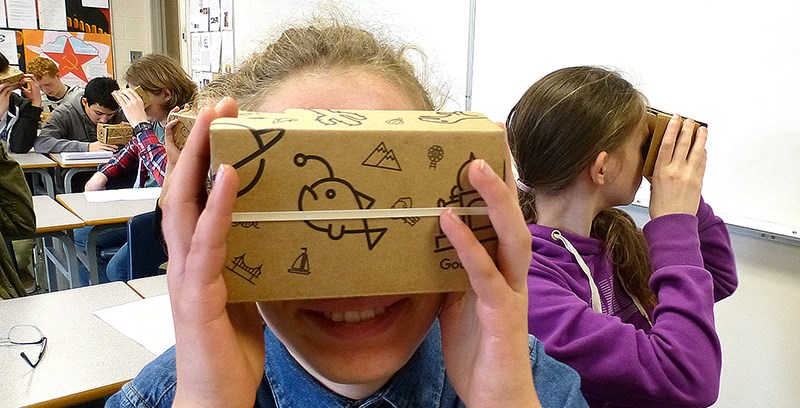The Editor,
Re. “Google takes Best kids on VR field trips” (The Tri-City News, March 4).
Congratulations to Dr. Charles Best secondary school and teacher Sean O’Reilly, whom, it seems, goes the extra mile for his students, and to his students in Google’s 3D pilot project . I am impressed.
But the adage “nothing new under the sun” deserves some attention. Near the time of the 3D excitement at Best, I happened to look at old photos taken at a museum. On display was a stereoscope with picture cards that allowed a viewer to experience worldly scenes in three dimensions. It was virtual reality before that term was coined.
News of this 3D use of smart phones motivated my look into the history of the stereoscope.
In the early 1600s, men made drawings that alluded to the concept of the stereoscope but lacked the means to build it. The first stereoscope was created by Sir Charles Wheatstone in 1833, before photographs were readily available. Drawings were used to create the 3D views in Wheatstone’s stereoscope. What a tedious process it must have been to draw the pairs of views with slightly different perspectives.
The oldest known photograph was made in 1825, according to a clipping from the Globe and Mail in 2002. Several years passed while photography evolved from new discovery to practical use, thus it was the 1850s when stereoscopic photography made stereoscopes a practical reality. In 1859, Oliver Wendell Holmes invented the handheld stereoscopic viewer.
In the era before radio, motion pictures, TV, computers and the internet, stereoscopes became immensely popular and a huge industry evolved to produce millions of postcard views that were eagerly purchased by owners of stereoscopes. It was big business.
We never had a stereoscope in our house when I was a child but one of our neighbours had one with a great many viewing cards. I readily remember being enthralled by the reality of the three-dimensional scenes.
Now, the newest generation enjoys the same sensation with its smart phones. Downloading new views, for a fee, will become big business.
The more things change, the more they stay the same.
Allan Liggins, Coquitlam



